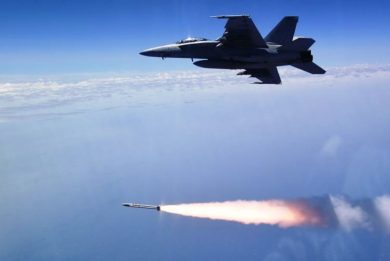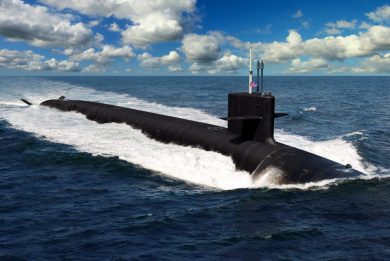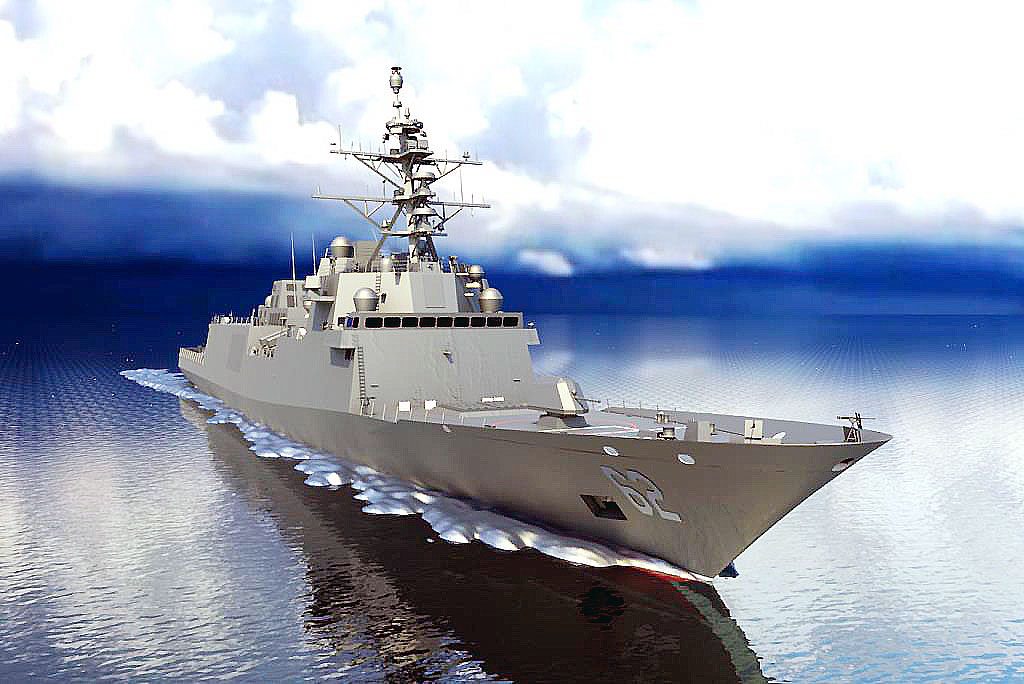
SNA 2021: Updates on FFG Constellation-class frigate programme
By Luca Peruzzi
During the Surface Navy Association (SNA) 2021 virtual symposium, the US Navy’s programme manager for the Constellation Class Frigate (PMS 515) gave an update on the latest programme developments since the detailed design and construction (DD&C) contract was awarded on last April to Fincantieri Marinette Marine (FMM).
Speaking about the two phase acquisition approach of the programme, where the FFG 62 Conceptual Design Phase I saw the full and open competition of five competitors based on the matured industry parent design adapted to meet the FFG 62 requirements, and the follow-on Phase II, which was launched three months in advance on last April with the FFG 62 DD&C contract award to Fincantieri Marinette Marine, the PM Captain Kevin Smith explained that “the programme is today in the latter phase intended to design, construct and delivery the FFG 62 lead frigate, with options for additional nine hulls in full and open competition”. The US Navy plans to build 20 frigates with the first 10 being funded one each in fiscal year (FY) 2020-2022; two each in 2023-2024; three in 2025; and two each in 2026-2030.
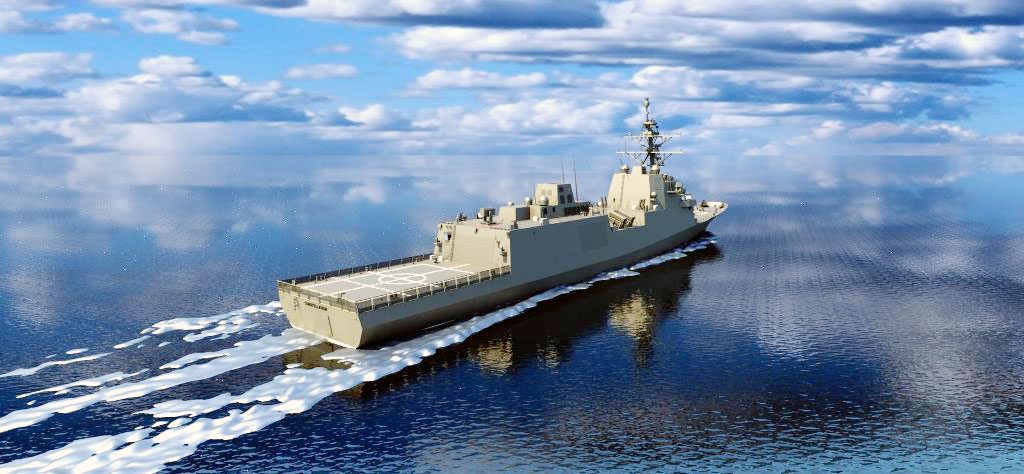
“The FFG 62 Class parent design is based on Italian Navy’s ship (FREMM). Fincantieri Marinette Marine will adapt the parent design based on US specifications and standards to meet US Navy’s FFG 62 requirements. All existing Buy American laws are included in the contract and therefore in the design of the ship. The FFG 62 will also have existing US Government furnished combat and weapon systems installed and integrated”, the FFG 62 PM remarked. Since the DD&C award, he continued, “the focus of the programme was on completing the functional and detailed design, with initial delivery of the FMM’s building specification that were worked out during the conceptual phase and are being still refined to be ready for a critical design review (CDR) later this fall. The programme is also in the transitioning to the domestic manufacturing on Ship 1 or the Buy American Act application to the FFG programme based on the Congress requests. The DD&C Request for Proposal was amended to include a number of components that are to be manufactured in the US for each FFG. The Navy and Fincantieri also conducted a six-month integrated baseline review (IBR) later last year.
The programme’s focus areas for the FY21 are the US Navy’s approval of the FMM’s build specification and the completion of the detail design in order to complete the critical design review (CDR) and to launch the lead ship construction later this fall (Q1 FY 22) after completing the Production Readiness Review (PRR). Looking to the construction programme, the latter is divided into nine ‘phases’, starting in Q1 FY 22 through Q4 FY 26, which will see the keel laying in Q1 FY 23 with the hull and superstructures coming together for the launch milestone with a new syncrolift in Q1 FY 25 for the lead ship delivery in Q3 FY 26. Addressing risk reduction activities which have been requested by the Congress, Captain Smith highlighted the establishment of land-based engineering test sites for the complete propulsion system and other main systems onboard as main actions being developed for risk reduction and to maintain the programme on schedule. Moreover, after the lead ship delivery, further testing and operational evaluation will be conducted prior reaching the initial operational capability in 2029 and the follow-on first deployment.
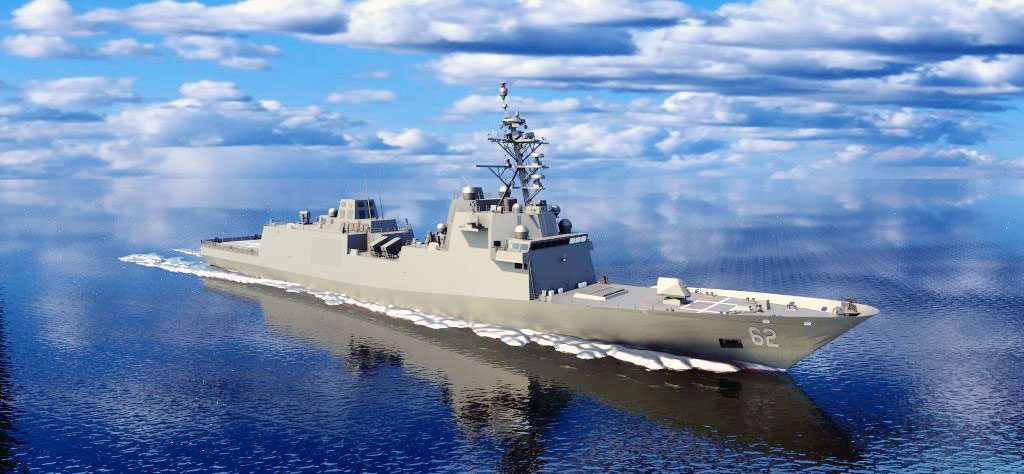
As part of the shipyard preparation to support the programme timeline and construction requirements, Fincantieri Marinette Marine is in the process of making major upgrades and expansion to both Marinette and Bay shipyards (Wisconsin) as capital improvements (also termed CAPEX). Among these enhancements, Marinette is installing a new syncrolift system which is scheduled to be completed in 2022 and will be the largest in the US. The system will be capable to handle vessels of nearly 10,000 tonnes and will be first demonstrated on the Saudi Arabian Multi-Mission Surface Combatant allowing for a more gentle launch compared to current side launch and the ship be outfitted to near completion, and tested inside climate-controlled facilities before launching. The other FMM facility, or Bay shipyard, which is the aluminum centre of excellence of the company and which also participates to the programme, will also be enhanced. “I am very pleased to say that Fincantieri is online with our programme schedule and is on track to have those upgrades completed in time to support the planned frigate construction activities”, said the US Navy representative.
Smith said the cost of the lead FFG will be $1.28 billion, which includes $795 million of the fixed-price design and construction contract, with the remainder covering the cost of government-furnished equipment and support. The Navy is required by Congress to keep the average cost of each of the nine follow-on ships between $800 and $950 million in fiscal 2018 dollars. He said the average cost of the next nine FFGs is estimated to be $781 million in 2018 dollars.
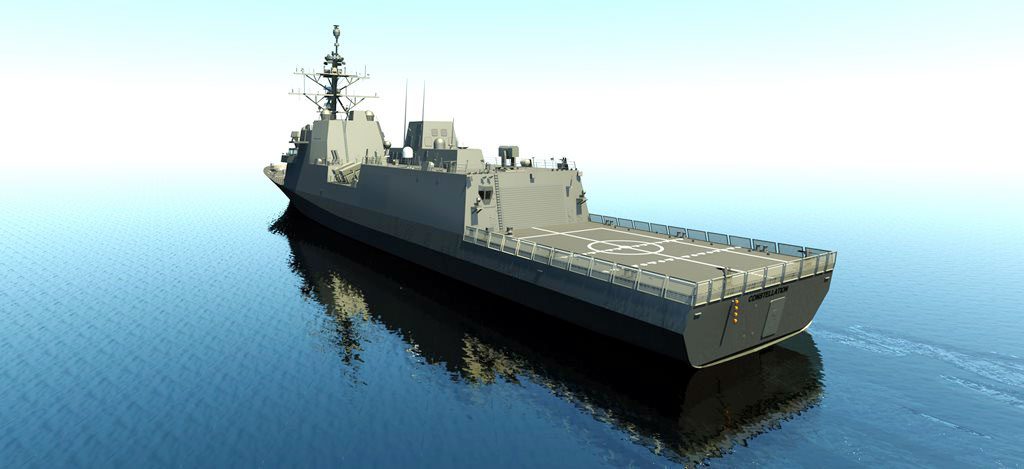
Speaking about the Buy American & Action plan previously mentioned and the Navy commitment to fostering a healthy and efficient shipbuilding industrial base, “which constitutes a national security imperative that is unique and must be maintained”, the FFG 62 lead ship contract award contained greater than 96% US content by value. “Since the contract award, the FFG 62 propulsion equipment is on the transition path to be fully US manufactured beginning with Ship 1. FMM and vendors are transitioning to US production on Ship 1 by developing the US workforce and bringing the ship service diesel generators (SSDG) and the electric propulsion motors (EPM) production at 100% by Ship 2. Bearings, shafts and seals are 100% US manufactured by Ship 1”, said the US Navy representative, adding that it will create 200 new jobs across multiple States, with the early transition in the programme allowing for a common class configuration, while reducing risk.
The updated ship principal characteristics of the future frigate given by the US Navy and FMM indicate an estimated full load displacement of 7,408 tonnes, an overall length and beam of respectively 151.2 and 19.7 meters, a service life of 25 years, accommodations for 200 persons including 24 officers and 176 enlisted. With an overall installed power of 48,679 hp, the propulsion and power generation package adopts a CODLAG configuration, the same of the Italian FREMM, and includes a General Eletric LM2500+G4 gas turbine, two electric propulsion motors, four ship service diesel generators and one auxiliary propulsion unit, under selection. The combat system is centered on an AEGIS B/L 10, three fixed faces AN/SPY-6(V)3 radar, an AN/SQQ-89(V)16 ASW suite with Variable Depth Sonar, a Mk 48 Gun Weapon System that includes the Mk110 57 mm gun, and a further armament package including one, Mk41 Vertical Launch System with 32 cells, 16 Naval Strike Missile anti-ship missiles, one Mk49 RAM, four Mk53 MOD 9 decoy launcher systems and two AN/SLQ-32(V)6 CM (SEWIP) Block II Electronic Warfare suites. The ship also has accommodations for one MH-60R ASuW/ASW helicopter plus one UAV. FMM also unveiled new artist impressions of the ship, showing a rearranged installation of satellite communication and other antennas on the mast and top side. Speaking about the ship growth potential, Captain Smith confirmed the hull has space, weight, power and cooling margins to accommodate upgrades during the service life, including direct energy weapons and other capabilities. As an example the allowed weight growth is around 400 tonnes.
Pictorials courtesy Fincantieri Marinette Marine

